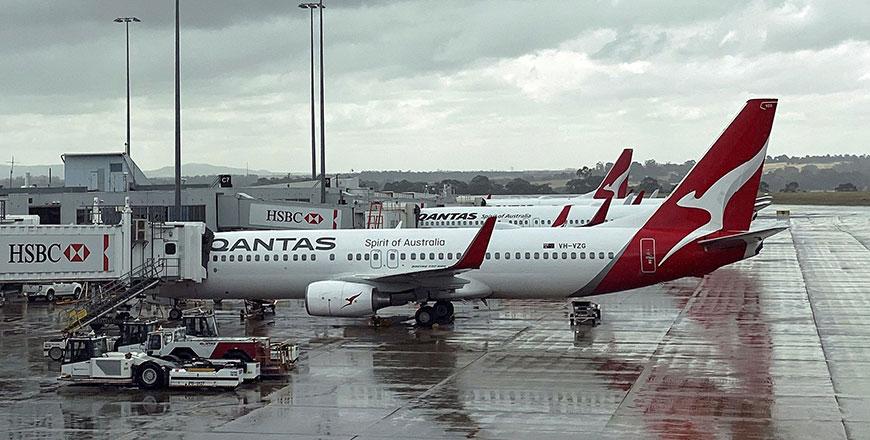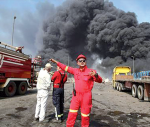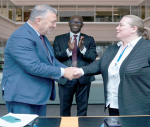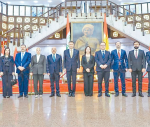You are here
Australia approves second Sydney airport
By AFP - Apr 15,2014 - Last updated at Apr 15,2014
SYDNEY — The Australian government Tuesday gave the go-ahead for a second international airport for Sydney, ending decades of indecision with a move predicted to boost the national economy.
Prime Minister Tony Abbott confirmed that Badgerys Creek in western Sydney will be the site of the new airport, with planning to start immediately and construction from 2016.
"It's a long overdue decision which to be honest, has been shirked and squibbed [dodged] by successive governments for far too long," the prime minister told reporters.
Sydney's Kingsford Smith Airport is the main gateway into Australia but suffers from capacity limits, with a former transport minister describing it as "built in an age when planes were small and few".
Abbott said without a second airport Sydney would be "grievously underserviced", adding that the current airport would not be able to cope with forecast growth in passenger numbers in coming decades.
Badgerys Creek, about 45 kilometres west of Sydney's central business district, has long been proposed as a second airport site but had previously been shelved due to fears of a local voter backlash.
Abbott, who swept to power in elections last September vowing to be known as an "infrastructure prime minister", indicated that the development would proceed on a "roads first, airport second" basis.
Jobs boost
The cost of the estimated Aus$2.5 billion ($2.35 billion) airport will be met mainly by the private sector, and the first flight was realistically not likely until the mid-2020s, he said.
As a first step, the government will offer the owner of Kingsford Smith Airport, Southern Cross Airports Corporation, the right of first refusal in relation to an airport at Badgerys Creek.
According to Abbott, the project would be good for economic growth and jobs, and could drive an increase in national gross domestic product of almost Aus$24 billion by 2060.
The government projects will create about 4,000 jobs in the construction phase, and go on to produce 35,000 jobs by 2035, increasing to 60,000 over time.
Australia's biggest airline Qantas welcomed the government's announcement, with Chief Executive Alan Joyce saying a second airport was a vital piece of economic infrastructure for Australia.
"The role of second airports has been well-established in several of the world's major capitals," Joyce said. "Sydney is the key gateway for air traffic in and out of Australia and the benefits of having two major airports will be felt nationwide."
Kingsford Smith Airport, which is only eight kilometres from the city centre, handled 36.9 million travellers in 2012 and passenger numbers are forecast to increase to 74.3 million by 2033.
It accounts for 40 per cent of international arrivals into Australia each year and 50 per cent of international air freight.
Kingsford Smith is subject to restrictions between 11pm — 6am, but Abbott left the door open to the new airport being free of a curfew given that so many fewer people lived near Badgerys Creek.
Abbott said the decision recognised the growth of Sydney's western suburbs, an area which is expected to see its population rise from two million to three million people in the next 20 years.
"A dedicated Western Sydney airport will service local aviation needs and be a much-needed relief valve for Sydney Airport," he said. "It will be a major catalyst for investment, jobs growth and tourism in the region for decades to come."
However, some are still expected to disagree with the plan. Stephen Bali from the No Badgerys Creek Airport Inc. told the ABC that "large segments across western Sydney will be fighting against this".
Badgerys Creek has been a potential airport site since 1986 and the federal government has bought about 1,800 hectares (4,446 acres) in the area.
The New South Wales state government has kept the surrounds largely free of development since then.
Related Articles
SYDNEY — Australian carrier Qantas reported on Thursday a $5.5 billion plunge in revenue during the second half of 2020 and said internation
PERTH, Australia — The "Kangaroo Route" from Australia to Britain became a shorter hop on Saturday when the first direct passenger service l
His Majesty King Abdullah and Australia’s Prime Minister Tony Abbott on Thursday discussed ways to boost bilateral cooperation.


















